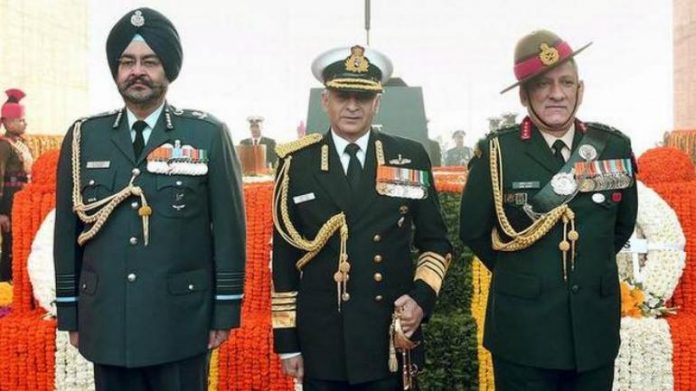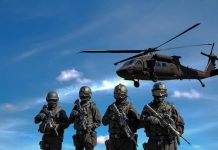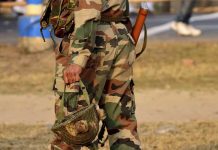This article is written by Pratap Alexander Muthalaly, a student of the Government Law College, Trivandrum. It gives a detailed analysis of the Army Act, Navy Act, and Air Force Act, the three laws central in the governance of military law.
Table of Contents
Introduction
The military in India has since long maintained a distance from public functions and affairs in the public sphere. In fact, the military has many distinct traditions and practices, which are limited to those in the military. Among these distinctions is a largely unique set of rules, laws, and legal traditions. In essence, there is a separate system of military law to govern the activities of military officials. A sizable majority of these laws and provisions are enumerated in the Army Act, Navy Act, and the Air Force Act.
Overview
Like many other rules and statutes, military law too is a legacy of the British Raj. With many of its early foundations being laid in the backdrop of the revolt of 1857. Freedom from British rule saw a slew of change to the Indian Army Act, 1911. These changes came in the form of the Army Act, which came into force on 22nd July, 1950. This was followed by the Army Rules 1950 (later replaced by Army Rules 1954). Later on, in 1993, amendments were once again made to the Army Act and the Army Rules.
Similar rules and provisions were instituted for the other wings of the military. This includes the Air Force Act, which was brought into force on 22nd July 1950. Also, the Air Force Rules of 1969 were instituted in accordance with section 189 of the Air Force Act, 1950.
How do these three service acts differ
- Each of the three service acts is unique in their own regard. In the case of the Air Force Act, 1950, three types of court-martial apply. These are general court-martial, district court-martial, and summary general court-martial.
- The Army Act, in addition to this, has the provision of the summary court-martial which can try personnel below the rank of Junior Commissioned Officer and can award punishments of dismissal and imprisonment up to one year. The navy meanwhile has only one kind of court-martial during peacetime and also a disciplinary tribunal during times of war. In contrast to the Army and the Air Force, where the senior-most officer of the court-martial automatically takes up the position of presiding officer, in the Navy, the convening authority always nominates the president of the courts-martial.
- In the Navy, the findings and sentence of courts-martial do not require the express confirmation of the convening authority or any other superior authority and they become operative the moment a pronouncement is made. This practice is however exempted in the case of a death sentence which requires prior confirmation from the Central Government. An acquittal decision is final in the case of the Navy and not subject to confirmation or revision as it would be in the case of the Army or the Air Force.
- With regard to the Army of the Air Force, the presence of a judge advocate in the district and summary general court-martial is not mandatory. This, however, is not the case with the Navy. In the navy, it is required that each and every court-martial is attended by a Judge advocate. Also, in the Army and the Air Force, the judge advocate remains present when the court deliberates on the findings, however, in the Navy the presence of a judge-advocate is not required when the court is considering the findings.
- Furthermore, in the case of the Navy, the commanding officer of a ship may try any person belonging to the ship immediately without any prior approval for offences that are not in the genus of a capital offence also the commanding officer is within his rights to award imprisonment or detention up to a period of three months. This provision, however, is not applicable to those of an officer rank. Meanwhile, the power of summary trial is limited in the Army and the Air Force wherein punishment of up to 28 days of imprisonment can be awarded to persons below the rank of NCO.
- The proceedings of a court-martial or disciplinary court are reviewed by the Judge Advocate General (JAG) of the Navy either on his own motion or on an application made by an aggrieved person. The JAG is to transmit the report of the review together with his recommendations to the Chief of the Naval Staff (CNS) for his consideration. This process is slightly different in the case of the other two military branches. In the Army and the Air Force, the officers of the Department of the JAG, before confirmation, review the proceedings of courts-martial and may make recommendations. These reviews are advisory and not binding on the Chiefs of the respective Service. One notable area of commonality is the overarching influence that the will of the various chiefs of staff hold over the outcome of cases, in contrast to civilian cases which are centred around the rule of law.
Criticisms of these acts
All three acts have garnered quite a bit of criticism from various quarters. Listed below are some of the most notable of these criticisms.
Absence of Legal provisions for Bail
There is at present no provision of bail for an arrested military person within the provision of the aforementioned three service acts. The officer charged is essentially at the mercy of his commanding officer and the authority overseeing his case.
While the Supreme Court has clearly laid out the basis on which bail should be granted, these rules and principles have however yet to be made applicable with regard to those military personnel that are being held in custody. Freedom of this nature in granting bail is for all purposes firmly rooted in personal whim, and there is a high likelihood of it being misused and thus this essentially makes the constitutional guarantee provided under Article 21 redundant.
Ineffectiveness of Trial in Summary Court Martial (SCM)
This mechanism is not upto the mark nor does it keep with the required standards. This is because for one, there is no prosecutor and rather intriguing the court takes up some of the functions that are normally provided by a prosecutor in a traditional court of law. Another shocking fact is that the accused is not awarded the right to defend himself with the assistance of a counsel, or any similar entity.
This aspect of military trial is once again an example of how it stands in clear violation of the provisions enshrined in Article 22 of our Constitution. Moreover there are violations to Article 21 as well. Basically the prescribed procedure for this practice does not fall under the ambit of what would be commonly considered as fair or reasonable. All this has resulted in there being numerous instances where the Supreme Court and various high courts across the country have lambasted the decisions made by SCMs. That is, they have often been labelled as being biased, awarding excessive punishment and also being in clear violation of Article 14 of the Constitution.
Absence of legal aid provided to the accused
What is probably the most blaring deficiency of the Indian system of military justice is the absence of experienced legal officers and consuls for the accused. While the Military rules allow for the accused to take up the services of a civilian lawyer at his own expense or to avail the services of a defending officer, these provisions are very rarely practiced in reality. That is, it is very rare for the accused to avail of the services of a civilian lawyer at their own expense. Furthermore, service officers are all too often inexperienced and even unwilling to commit to providing counsel for the accused.
There is much to be desired in terms of the persisting infrastructure in place. Furthermore, there is little incentive provided to defending officers to essentially help and aid accused persons. The issue is further accentuated by the fact that this task is seen as risky and offering little reward. The result is that cases that come before the court-martial are not adequately defended, which is in direct opposition to the frameworks enshrined in Article 22 of the Constitution.
Lack of impartiality of members of court martial
A court-martial established under the ambit of military law plays the dual role of coming through with both the findings and sentence. It is the opinion of experts in the study of military law that members are often lacking in experiences, qualification and training to fulfill this crucial role. Furthermore, critics point to the prevalence of the highly disturbing phenomenon that is “command influence”. This essentially means that decision making is not necessarily independent or unbiased in the administration of justice. Certain sources claim that members are given detailed instructions from those who pull the strings in the military. Given that the immense risk that is posed from disobeying orders in the military, most officers are swayed to act in a way that is directed to them.
Lack of autonomy afforded to the Judge Advocate General (JAG) department
The Judge Advocate (JA) has no role to play, that is, they neither function as an advocate or as a judge. Therefore for all purposes, any comparison of the JA to the judges in a trial is inaccurate, unless of course in the fact that members of the JAG have to maintain a firmly impartial stance. The JAG department is within the administrative and functional control of the same executive who calls for a trial by court-martial and also later reviews the said proceedings. The quality of advice provided by the JA is central influencing the decision making of the members of the court-martial. In spite of all this, officers of the JAG are not really autonomous and there are definite constraints to their freedom to give a fair and unbiased decision as argued by UC Jha.
Double Jeopardy
The constitutional protection provided against the phenomenon of double jeopardy is clearly enumerated in Article 20(2). While it can be used in a court-martial, the same is not available to stop a second trial on the same offence before a civil court. That is, for example – a person who is subject to the provisions of the Air Force Act, who has once been tried and convicted or acquitted before a court-martial can be tried a second time on the same charges by court of civil jurisdiction.
Denial of the Right to Appeal
At present there is no real procedure for appeal in response to the findings or the verdict delivered by the court-martial. However what provides basis for the current regime is listed in Chapter XII of the AA, specifically sections 153 to 165.
These sections enumerate the current subsisting procedure for what is termed as the ‘confirmation’ and ‘revision’ of court-martial directives. In Section 153, it is said that no finding or sentence of parties like a general, district or summary general, a court-martial can be constituted as valid unless of course it is confirmed as is enumerated in the AA. Next in Section 160, the revision of a finding or sentence of a court-martial via an order confirming a decision is passed. Similarly, Section 164 is concerned with the confirmation and the remedy that is available to those parties against whom a verdict or sentence has been declared. With regard to a final finding or sentence awarded vis-a-vis a GCM, DCM and SGCM, the remedy that the accused can opt for is specified in Section 164 (2), what the provision essentially says is that this can be utilized only once the finding of the sentence is assured or confirmed. The option of seeking remedy is, therefore, for all purposes unavailable to the person on trial prior to the confirmation of the sentence.
Also, in addition to this, the remedy is more of a formality and is not carried out to the highest standard. Essentially the aforementioned provision is diluted, and for the most part it takes place behind closed doors where the accused is denied the right of personal representation. As a result, in truth there is no real option to appeal against a court-martial order.
Inadequate powers afforded to the Armed Forces Tribunal
The Armed Forces Tribunal is a military tribunal in India. It was established under the Armed Forces Tribunal Act, 2007. While it was initially seen as something that could help greatly revolutionise the military justice system in India, at present it has largely failed to live up to the fanfare and hype. A major problem that the AFT faces is a shortage of the required number of tribunals.
As a result of this, there is a lot of delay in the judicial process. Furthermore, there is a serious case of non-implementation of the final orders which could have provided relief to litigants. A majority of the cases coming to the Tribunal were against the Union government, with the ministry of defence as the respondent.
It was observed that the relief and remedy ordered by the tribunal to the aggrieved servicemen and veteran were merely on paper due to lack of implementation and compliance by the authorities. A serious lack of adequate contempt power with the tribunals rendered them incapable of getting their decisions implemented.
Conclusion
While the three military acts have succeeded in maintaining a semblance of order in our military in the years following independence, there is still much left to be desired. The current stance over bail is in urgent need for rectification. Also, it is crucial that in a democracy such as ours the officer being tried must be offered adequate legal aid and support. Also, the lack of support and backing given to the Armed Forces Tribunal is a cause for worry. The backlog of cases, lack of an adequate number of tribunals and resistance to cooperating are all proving to be a sore point for many veterans who have had their cases delayed for years. Furthermore, there have been calls for the unification of the three acts into one in recent years, many countries like the US have already implemented this. If our military fails to keep up with the times, it may risk internal clashes and collapse all of which is highly undesirable. This is why it is most important that our military and armed forces stay abreast of the times and don’t fall prey to complacency.
References
- https://usiofindia.org/publication/usi-journal/unification-of-the-army-the-navy-and-the-air-force-act-2/
- https://usiofindia.org/publication/usi-journal/military-justice-system-in-india-2/
LawSikho has created a telegram group for exchanging legal knowledge, referrals and various opportunities. You can click on this link and join:
 Serato DJ Crack 2025Serato DJ PRO Crack
Serato DJ Crack 2025Serato DJ PRO Crack











 Allow notifications
Allow notifications



